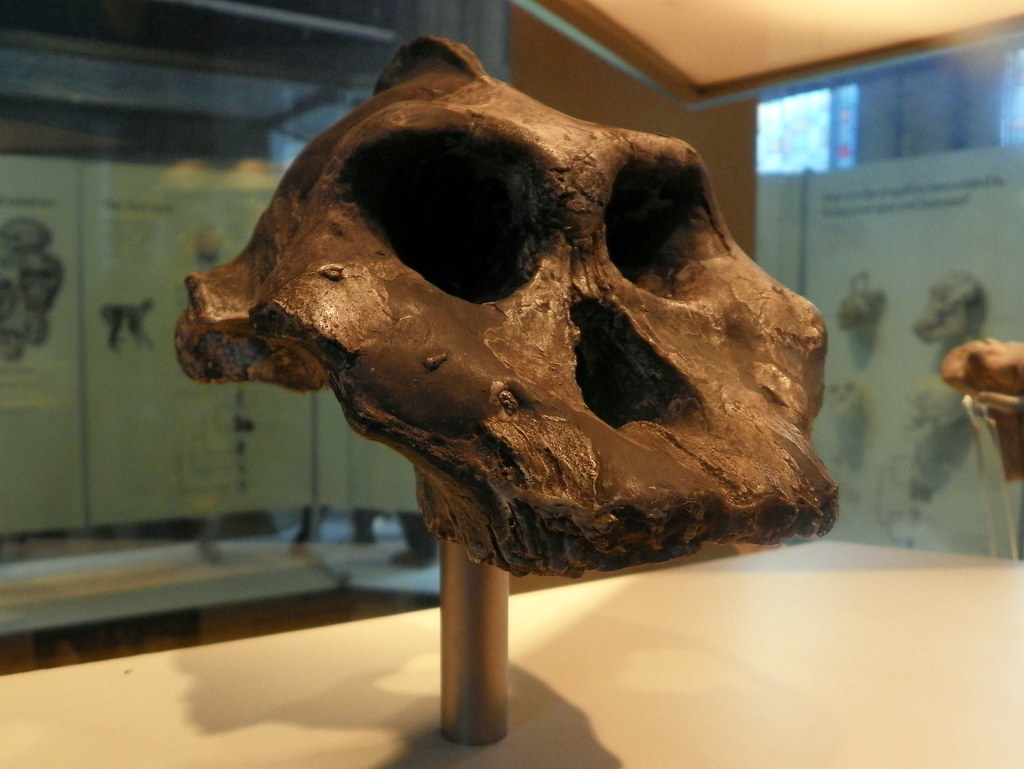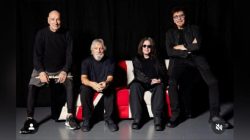By examining fossils,
Prof Fredrick Kyalo Manthi
helps us understand how life on Earth has evolved over time. He is a leading Kenyan palaeontologist and the Director of Antiquities, Sites, and Monuments at the National Museums of Kenya. Born and raised in Makueni County, he last month became only the second Kenyan ever inducted into the prestigious National Academy of Sciences (NAS) of the United States
. This is
one of the highest honours a scientist can achieve worldwide. Palaeontology is the study of ancient life through fossils. Prof Manthi discusses his work and
how it related
to Kenya’s
deeply rooted
cultural and religious traditions.
He spoke
with Star’s
John Muchangi
.
In April you became the second Kenyan ever inducted
into the
National Academy of Sciences
(NAS)
of the
United States,
after Dr Meave Leakey in 2013
.
What does this mean to you personally and for
Kenya
?
It’s a huge honour for me, for Kenya, and for the National Museums of Kenya. It’s a testimony that Kenyans have come of age in research.
This year, I was also the only one from Africa. I think in the whole of Africa, we are very few in the academy; It’s unlikely we are more than five.
Election into the academy is purely based on merit.
I didn’t even know I had been nominated because you never apply for it. Someone already in the academy must propose your name. I didn’t know anybody would propose me. These are things you don’t even dream about because I thought this was something preserved for Americans. Not because I’m a lesser scientist, but because of how far removed we are from these institutions.
To this day, I don’t know who nominated me. They never tell you. I can only speculate because I work with some colleagues who are members, but I don’t know for sure.
This recognition gives hope to young scholars
in Africa and it
t shows them they can reach the highest levels of science. If I could do it, why not them?
It
ha
s inspired me even more to support young Kenyan scientists
,
to encourage them to do good science and collaborate widely. I actually asked what criteria they use to elect people. I was told it’s not just your publications or discoverie
s. T
hey
also
look at how much you’ve done to promote science, your mentorship efforts, and how well you collaborate globally.
Are you a team player? Do you create opportunities for others? Are you generous with your time and knowledge? These things matter.
I was told that aside from my publications and discoveries, I’ve done well in building collaborations between Kenyan scientists and others globally, and in mentorship. So it’s not only about how many papers you publish. It’s also about your contribution to the scientific community.
So t
hey probably also looked at
your work through the
Prehistory Club
.
Yes. I founded the Prehistory Club in 2000. We’ve been going to schools and colleges across Kenya, encouraging young people to consider careers in paleosciences and science in general. We’ve engaged thousands of students.
I never thought anyone noticed these efforts, but it turns out they did. It taught me that even the little things we do
–
when done consistently and with sincerity
–
are seen. My brother, wherever you are, just do the right thing.
I didn’t start the club to win awards. I did it because I felt it was the right thing for the country and for the future of palaeontology.
So
w
hat
exactly motivated
you to found the
c
lub?
I founded it after returning from the University of Cape Town where I completed my bachelor’s degree. I was deeply struck by how few Africans, especially Black Africans, were in palaeontology and archaeology program
me
s. Almost all the students were white, from South Africa and other countries.
I kept asking myself: What can we do to increase African participation in palaeosciences?
That was the motivation behind the Prehistory Club. I saw a need to engage more Kenyans. Back then, the number of African researchers with PhDs in these fields was very small. So I believed creating a platform to speak to students and raise awareness could make a difference
–
and it has.
I think
y
our efforts to promote palaeosciences in Kenya come up against strong religious traditions. Many conservative interpretations of Christianity, for example, conflict with the scientific timeline of the
e
arth and life.
Many
people also mistrust evolution because of its historical misuse to justify racism and colonialism. How do you address these issues?
Let me start by saying I don’t think there’s any Kenyan who doesn’t appreciate science unless they’re just ignorant. Even that pen you’re holding is a product of science. The phone calls we make, our medicines, the hospitals we go to
,
it’s all science.
Now, evolution is just the scientific way of explaining how we came into being. Biology teaches that life began from a single cell. But science doesn’t say where that cell came from. That’s where the divine powers of God begin
. W
here science ends, faith begins.
Creation says God created man last. Science also tells us the same
:
planets, stars, Earth came first, and man came last. In evolutionary theory, man appears at the end. So, the two aren’t in conflict. The only difference is the scale
. S
cience talks in millions of years, while creation doesn’t. But the Bible says a day for God could be a thousand years.
The Bible also gives us moral boundaries
, for instance,
thou shal
l
not kill, while science explains how things work. They complement each other.
And remember, even our communities have origin stories
. T
he Kikuyu have Mumbi and Gikuyu, the Kamba say we came from Nzaui, and the Luo have their own beliefs. These are all ways of explaining our beginnings.
As scientists, we provide the scientific explanation, supported by evidence from the fossil record.
My dad used to bring home lots of books on palaeontology. That exposure helped me know early on that this was what I wanted to do.
That’s something I really want to emphasi
s
e. Your background does not define your destiny. If you’re focused, work hard, and surround yourself with supportive people, you can make it. I was lucky to get support especially from Prof Frank Brown in the US. He identified my strengths and supported me throughout my studies.
What’s the entry point for a young person seeking a career in palaeontology?
What defines your research interests currently?
Imagine taking you to the Sahara
desert
today
. W
ithout adaptation you
will not
survive. But we
hav
e developed technology that helps us live in extreme conditions. Our ancestors didn’t have that privilege. They were at the mercy of their environment.
Understanding past environments also helps us protect today’s fauna. We
have
already lost many species due to environmental changes
so i
f we don’t act, we’ll lose even more.
Could you
mention
some of your significant
finding
s
in Turkana and how this challenged previous evolutionary theories?
Yes, we’ve made some remarkable discoveries. In 2000, working with Dr Meave Leakey, I discovered a fossil dating to about 1.55 million years ago. It was a homo erectus fossil.
This fossil, among others, helped show that homo habilis and homo erectus coexisted for a long time
,
over a million years. That challenged the idea
your probably learnt in school
of a straight evolutionary path, where homo habilis gave rise to homo erectus in a strict linear progression.
Now we know evolution is more complex. Species can coexist. Some may die out, while others evolve further. This understanding came from those discoveries in Turkana.
That fossil discovery earned me the Order of the Burning Spear award from President Mwai Kibaki in 2007.
How is the application of ancient DNA research (the use of genetic material from old biological samples to study past populations and species) in the field of archaeology and palaeopathology?
Ancient DNA is a more recent study.
I know we’ve done a bit of that in Kenya, where we’ve analysed a number of human populations. Ancient DNA cannot be tracked for a very long time, especially those early fossils.
It’s been tracked in the more recent populations, like maybe 10,000 years ago, 8,000 years ago, or thereabout. But it has enabled us to track how human populations have moved from point A to point B. It’s really helped us advance our understanding about human evolution. It’s a more recent area of study, but it’s grown pretty fast.
I have a question on the rodent fossils. How often do they help us understand the ancient environment?
Great question. Rodents are incredibly important in paleoenvironmental studies. They are very habitat-specific and live in highly locali
s
ed environments.
You’ll never see rodents migrating between regions like Maasai Mara and Serengeti. They live in small areas
,
sometimes even just one bush.
Because they’re so locali
s
ed, rodents give us a very accurate picture of what an ancient environment was like. In one small area, you might find ten different rodent species. That same area wouldn’t even support one elephant. So the rodents give us a high-resolution signal of the ecosystem in which they lived.
How does the NMK collaborate with local communities to promote heritage conservation?
These communities are the ones living with the heritage sites. In Turkana, for example, they wake up every day surrounded by these sites.
We strive to involve them as much as possible in conservation efforts. We want them to feel part of our work, because they are.
At NMK, we are only custodians of Kenya’s heritag
e,
heritage that belongs to the people, and to humanity. So we involve communities in all our program
me
s. We can’t do this work without them.
Many scientists say there is a greater appreciation of science in the current government
. Do you also think so?
Yes, I must say we are lucky right now. We have a president who is aggressively championing the idea of Kenya as the cradle of humankind.
I really want to join President William Ruto in promotion of Kenya as the home of human origins, because indeed we are the home of human origins. We have wonderful fossils that document our ancestry as a species. From the last seven million years ago all the way to the present, that record is in this country.
And Kenyans should be proud of that record. We should be proud of that heritage and use it even to really create jobs, have more visitors come to visit the country, go to our sites across the country, go to our museums across the country.
And you know, you cannot run away from science.
Science is what’s causing all the innovations and the big things happening in this world. The President is a scientist himself and understands these things.
Provided by SyndiGate Media Inc. (
Syndigate.info
).







